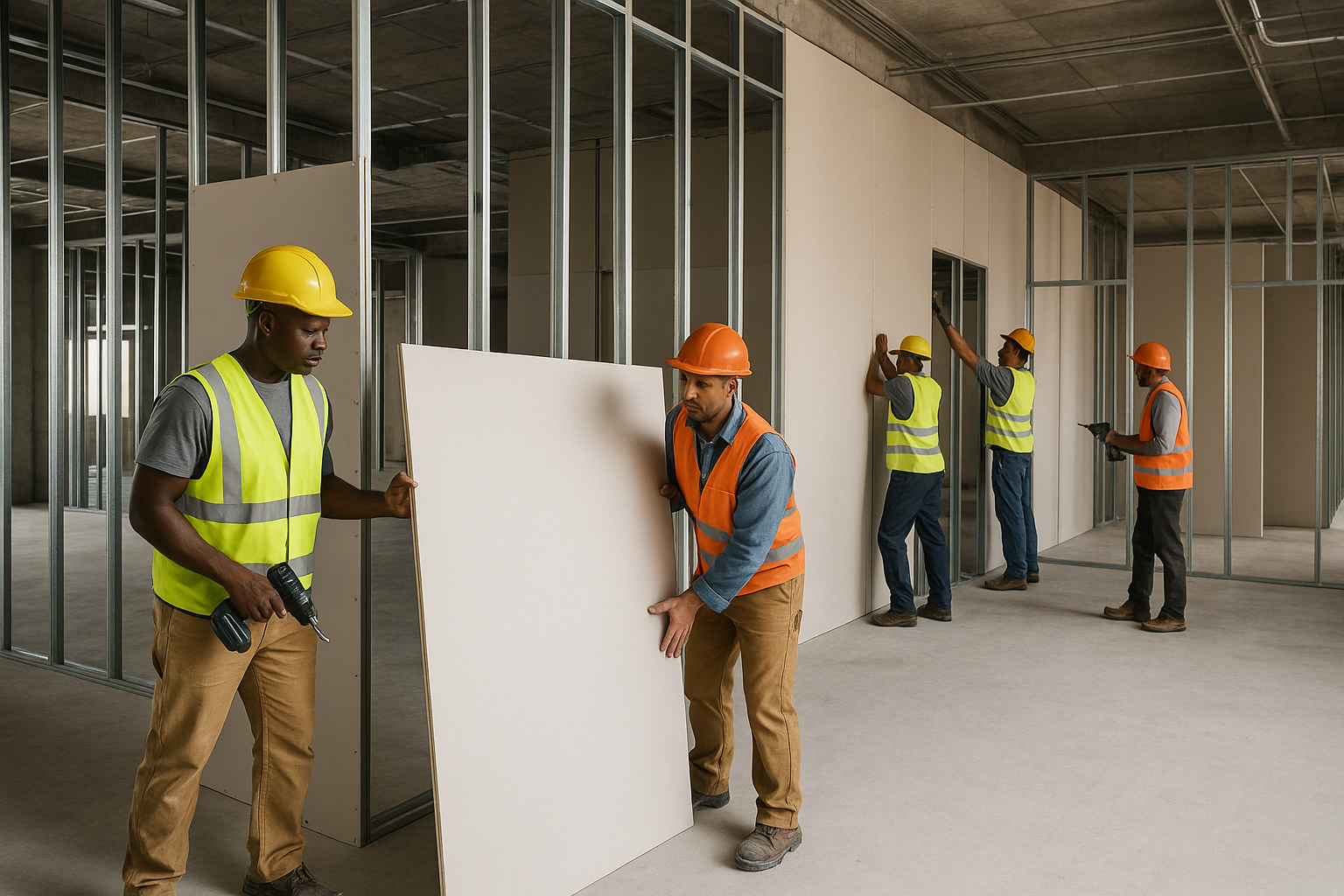
Estimating fire-rated drywall compared to standard boards introduces distinct variables that directly impact material costs, labor rates, and installation sequencing. For architects, engineers, and general contractors involved in commercial, institutional, or multifamily construction, understanding these differences is essential to producing accurate, defensible estimates. While both board types serve structural and aesthetic purposes, fire-rated assemblies must meet stringent code requirements—adding complexity to the estimating process.
Fire-rated drywall, often referred to as Type X or Type C, contains glass fibers and other additives that enhance its resistance to heat and flame. These boards are commonly specified in areas requiring fire separation between units, exit corridors, mechanical shafts, and stairwells. Compared to standard drywall, they:
These differences make it critical to estimate fire-rated drywall as a separate scope, not simply as a percentage markup on standard walls.
Installing fire-rated drywall assemblies is more labor-intensive. Not only do the boards themselves weigh more, but contractors must also ensure precise alignment and attachment to meet inspection standards. In some cases, special framing components or backing may also be required. Crews typically install fewer square feet of fire-rated assemblies per day than standard partitions.
Material costs also fluctuate based on board thickness, layer count, and market conditions. For example, a 2-hour rated shaft wall may require multiple layers of 5/8” Type X drywall on each side—doubling board and fastening material requirements.
Modern estimating software purpose-built for drywall estimating allows you to assign wall types, labor rates, and material multipliers specific to fire-rated assemblies. This ensures your estimate reflects the true scope—not just a guess based on wall square footage.
These tools also allow you to compare different rated systems side by side, enabling architects and contractors to explore value engineering options without compromising code compliance or performance.
Active Estimating allows users to tag, sort, and group fire-rated drywall assemblies across the project, creating dynamic cost breakdowns by wall type, fire rating, or location. With built-in historical benchmarking and integrated production data, estimators can model labor output more accurately, flag high-cost assemblies early, and provide cost feedback during design phases.
Fire-rated drywall estimating is not just about code—it’s about precision. When estimates fail to reflect the true costs of rated assemblies, budgets falter and project schedules suffer. By treating fire-rated walls as a unique scope, applying real-world data, and leveraging intelligent estimating platforms, teams can deliver more accurate bids and better project outcomes. Estimating with clarity leads to building with confidence.
Schedule a personalized demo to see how Active Estimating can work for your specific needs.
